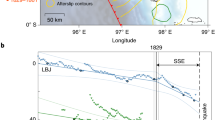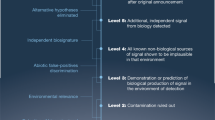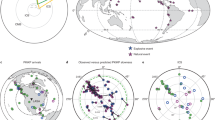Abstract
The risk of a doomsday scenario in which high-energy physics experiments trigger the destruction of the Earth has been estimated to be minuscule1. But this may give a false sense of security: the fact that the Earth has survived for so long does not necessarily mean that such disasters are unlikely, because observers are, by definition, in places that have avoided destruction. Here we derive a new upper bound of one per billion years (99.9% confidence level) for the exogenous terminal-catastrophe rate that is free of such selection bias, using calculations based on the relatively late formation time of Earth.
This is a preview of subscription content, access via your institution
Access options
Subscribe to this journal
Receive 51 print issues and online access
$199.00 per year
only $3.90 per issue
Buy this article
- Purchase on SpringerLink
- Instant access to full article PDF
Prices may be subject to local taxes which are calculated during checkout

Similar content being viewed by others
References
Jaffe, R. L., Busza, W., Sandweiss, J. & Wilczek, F. Rev. Mod. Phys. 72, 1125–1140 (2000).
Hut, P. & Rees, M. J. Nature 302, 508–509 (1983).
Dar, A. & De Rujula, A. Phys. Lett. B 470, 142–148 (1999).
Carter, B. in IAU Symposium 63 (ed. Longair, M. S.) 291–298 (Reidel, Dordrecht, 1974).
Bostrom, N. Anthropic Bias: Observation Selection Effects in Science and Philosophy (Routledge, New York, 2002).
Lineweaver, C. H., Fenner, Y. & Gibson, B. K. Science 203, 59–62 (2004).
Author information
Authors and Affiliations
Corresponding author
Ethics declarations
Competing interests
The authors declare no competing financial interests.
Supplementary information
Rights and permissions
About this article
Cite this article
Tegmark, M., Bostrom, N. Is a doomsday catastrophe likely?. Nature 438, 754 (2005). https://doi.org/10.1038/438754a
Published:
Issue date:
DOI: https://doi.org/10.1038/438754a
This article is cited by
-
The Causal Closure of Physics in Real World Contexts
Foundations of Physics (2020)
-
Integrative variants, haplotypes and diplotypes of the CAPN3 and FRMD5 genes and several environmental exposures associate with serum lipid variables
Scientific Reports (2017)
-
The past, present and future supernova threat to Earth’s biosphere
Astrophysics and Space Science (2011)
-
We're all going to die
Nature (2007)
-
Astrophysics in 2006
Space Science Reviews (2007)



